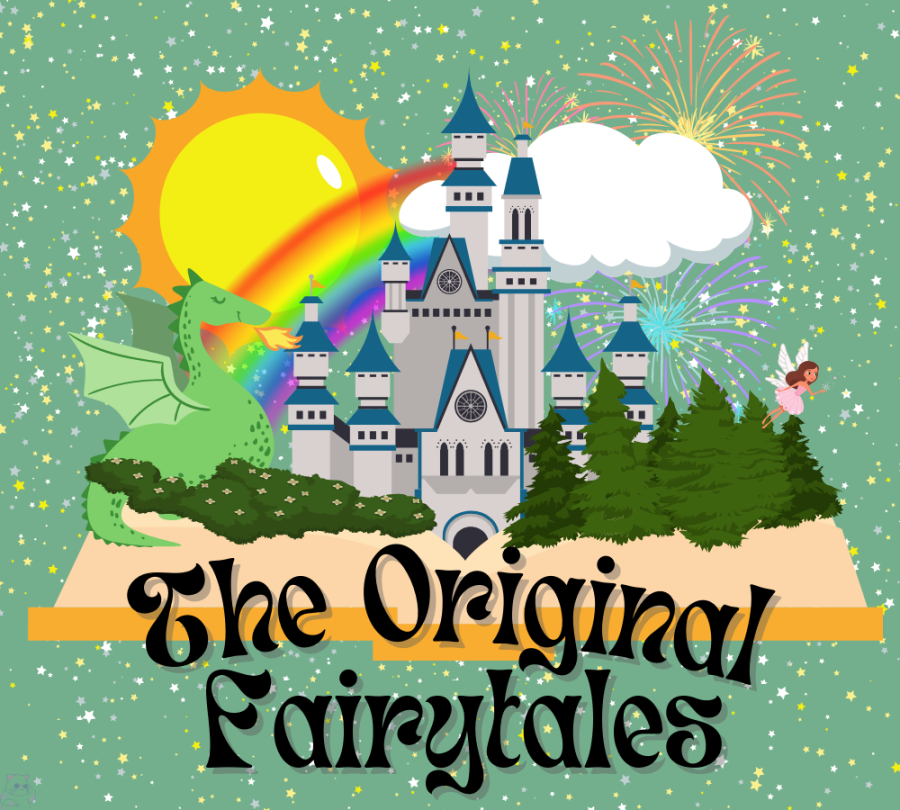Most people grew up watching and reading fairy tales about Cinderella or Peter Pan, but those do not tell the original stories. These fairy tales cease to show the not-so-innocent truth about how the originals go.
Sleeping Beauty
The Sleeping Beauty that we grew up watching projected a little of the strangeness from the original but not as bad. Sleeping Beauty’s story, originally called ‘The Sun, the Moon, and Talia’, had been based on a story where a king finds a beautiful girl asleep and cannot wake her so he rapes her instead. Now exactly what it sounds like, the king that supposedly woke her up with a kiss did not even wake her. The Italian poet Giambattista Basile chose an interesting story to put in his “Pentamerone” collection.
The girl, Talia, born to become a powerful ruler, did not get the chance because the wise men of the kingdom prophesied that she would meet her death by a flax splinter. So the king forbids her to go near any flax spinners, flax, or even clothes made of flax for fear of her death. Conveniently, the “forgets” to tell her about the whole thing. So when the girl gets older she watches an old woman spinning flax on her flax spinner and asks her if she can help. So while she helps the old lady by stretching the flax, a splinter gets lodged under her fingernail and she appears dead. Rather than burying her or even cremating her like a normal person, her father leaves her in an abandoned palace in the woods for her to rot.
While on a hunting trip, a king stumbles upon the castle and tries to get in because his eagle flew inside. When he did not get an answer from anyone, he scaled up the wall and climbed into the window that his eagle flew into. He wandered the entire estate and did not find anyone besides the girl and to his dismay, he could not wake the poor girl up. So, “being on fire with love, he carried her to a couch and, having gathered the fruits of love, left her lying there. Then he returned to his kingdom and for a long time entirely forgot the affair.”
Talia herself became pregnant and she, along with the babies, were cared for by kindly fairies that were conveniently not there whenever she was raped. Additionally, her becoming pregnant proves that she was actually still alive from the needle, but just asleep. The fairies would help the babies feed, but one time one of the babies accidentally sucked on her finger and got the splinter, at which point she woke up. At one point, the king remembered the girl and decided to go and pay her a little visit again (classy). However, when he visits her again, he finds her awake and with twins named “Sun” and “Moon” for she did not know where they came from like the sun and the moon.
After the king explained what had happened to her (rather an awkward conversation), rather than being upset with him and calling the local law enforcement, she decided that she loved him and he decided that he loved her as well. So they lived happily ever after… besides the fact that he was already married and his wife was growing suspicious of where he went. When he came back (like he did not confess his love for a girl that he had raped and then left in an estate in the middle of nowhere), he started saying Talia and his child’s name in his sleep.
The Queen forced the King’s secretary to tell her everything or she would have him killed. Rather than asking how the King’s secretary knew all this information, she sent for the children in the name of the King and ordered that she would have the cook kill and feed them to the king. While the king eats, she keeps telling him “You are eating what is your own.” To which he replies, “I know very well I am eating what is my own, because you brought nothing with you into this house!”
Next, the Queen sent for Talia in the name of the king and confronted Talia saying, “Are you the whore who has been enjoying my husband? Get ready to be welcomed in hell, because you will soon be going there.” She then prepared a fire in the courtyard to burn Talia in, ignoring Talias explanations of what really happened.
To stall for time, Talia asks if she can strip naked before being thrown in the fire. While slowly stripping, she continuously screamed to the point where the king came in. Upon finding out what his wife was planning on doing, he burned his wife and secretary in the fire instead of Talia. The king also tried to have the cook killed, but soon found out that he spared the children and had hidden them. Thus, he was spared and given a large reward. So now, with the queen finally out of the way, the king feels free to marry his raped mistress, and now they really do live happily ever after, with the last line of the story being (translated): “Lucky people, so ’tis said, Are blessed by Fortune whilst in bed.”
Snow White
Even though there are parts of the Disney version of Snow White that are still a part of the Grimm version, like the Evil Queen trying to kill her, there was more to the original story. In the Disney version, Snow White is only 14 which is still a little young to be married but it does not compare to the original 7-year-old Snow White. Still similar to the newer Snow White, the Queen does not like Snow White and orders the huntsman to kill her in the woods. Telling him to bring back her lungs and liver for her to eat, the huntsman takes pity on the poor girl and lets her go. In order to keep Snow White safe, the huntsman kills a boar and brings back its lungs and liver. Thinking that they are Snow White’s organs, she eats them.
The Queen tricks Snow White 3 times in the Grimm version. The first time, she has Snow White try on a corset, which was so tight, that it made her pass out. (The dwarfs save her by cutting the laces.) The second time, she sells Snow White a poisonous comb, which the young girl puts in her hair, causing her to pass out. (The dwarfs take it out.) The third time the Queen tricks her with the same poisonous apple we see in the Disney film.
Having fainted and presumed dead, young Snow-White ends up in a glass coffin in both book and movie. When the Prince happens in the Grimm version, he insists on taking the deceased beauty away, even though he’s never met her. The dwarfs hesitantly agree, but as they are carrying her coffin out of their house, one of them stumbles. Jostled from her resting place in the coffin, Snow White spits out the apple lodged in her throat and immediately revives, without the influence of the Prince’s kiss.
In the book version, the Queen attends their wedding where her punishment of dancing to her death awaits her.
The Grimm version of the Queen’s death goes like this: “They put a pair of iron shoes into burning coals. They were brought forth with tongs and placed before her. She was forced to step into the red-hot shoes and dance until she fell down dead.”
Peter Pan
“All the children, except one, grow up”
That line was written by J.M. Barrie in 1911, taken generally as an expression of a beautiful and gloomy fantasy since children are seen as so innocent and shameful that they eventually have to grow up. Peter Pan, the boy who would not grow up, lives the dream that many do not have to with the beautiful but tragic story. In our era, the idea of a child who never grows up has a decidedly sinister bent to it.
We live in an era that acts particularly prone to giving dark and gritty reboots to children’s properties, but Peter Pan seems to lend itself well to this kind of transformation. Surprisingly, it seems easy to recast Barrie’s “gay and innocent and heartless” Peter as a villain, and just as easy to reimagine Captain Hook.
You do not even need to change the mythology of Neverland that much, you just need to turn the settings of Neverland from a game, with game logic, into the literal truth. All the darkness and creepiness of Barrie’s fantasy island that stays hidden under the surface and the tragedy that happened during Barrie’s life suddenly becomes legible. Since the character’s inception, Peter Pan has been both fantasy and nightmare for Barrie and for the family of little boys who inspired him throughout their short lives.
The story of Peter Pan began in his 1902 novel The Little White Bird. It’s a semi-autobiographical tale of a man becoming enamored of a little boy who he wants to steal away from his mother. In order to befriend the child, Barrie makes up the story of Peter Pan, the fairy/bird/baby who lives in London’s Kensington Gardens.
Peter Pan is a week-old baby when he leaves home, and he never ages past that. He believes that his mother will always leave the window open for him, so he plays happily with the fairies and the birds without fear of losing her affection. When he finally makes his way back home to her, he finds that he came too late for his mother to cuddle another baby. It’s a portrait of Peter Pan that’s much more tragic than the iconic portrait to come.
The whole thing was based on Barrie’s own relationship with Georige Llweelyn Davies, a 5-year-old boy whom he met in Kensington Gardens when he was 37. Barrie’s dog ran right up to him when they met and he eventually nursed a deep affection for the child. Barrie soon developed a deep and jealous friendship with George’s four little brothers: John, Michael, Nicholas, and Peter, the last of whom would share his name with Peter Pan.
Biographers and critics have been arguing for decades on whether or not there was a sexual component to Barrie’s relationship with the young boys, and that question has never been settled to anyone’s satisfaction. Although he was married twice (he never fathered any children), most of Barrie’s contemporaries described him as asexual.
“I don’t believe that Uncle Jim ever experienced what one might call a stirring in the undergrowth for anyone- ma, women, adult or child,” Nicholas, the youngest of the Llewelyn Davies children. Remarked as an adult. “He was an innocent.”
The emotional weight all comes at the end when Peter meets the adult Wendy, who is “helpless and guilty, a big woman” with “something inside her… crying, ‘Woman, woman, let go of me!’’ because she feels so strongly that she should remain a child for Peter’s sake and for the sake of the child she used to be. By growing up, she abandoned Peter just like his first mother did. This caused Peter to cry but not for long because there’s a replacement waiting for him: Wendy’s daughter Jane, and then Jane’s daughter after that. There are always more children to play with and always more mothers.
Peter Pan became an icon even though the Llewelyn Davies children lived short and tragic lives. George died at 21 as a soldier during World War I in 1915. Michael was just shy of his 21st birthday when he drowned in 1921, in what remains wildly believed to have been a suicide. John died of lung disease in 1959 at the age of 65. Peter, who called Peter Pan “that terrible masterpiece”, died of suicide in 1960 at age 63. Only Nicholas, the one who called Barrie “an innocent”, survived until he died of natural causes in 1980 at age 77.
Barrie himself died of pneumonia at age 77 in 1937 but he had been devastated by George and Michael’s death years earlier. He had come to think of Peter Pan less as a celebration of the childhood innocence of his young friends and more as a referendum on himself.
“It is as if long after writing ‘P. Pan’ its true meaning came to me,” he wrote in a notebook. “Desperate attempts to grow up but can’t.”
Peter Pan was so sad and dark that if someone wanted to it would not be hard to turn him into the villain. In both book and play, Peter kills pirates without a second glance. In the book, they also learn that Peter kills the Lost Boys as well, either to “thin the herd” or because they are growing up and they are not allowed to since it’s against the rules. He also periodically alters the Lost Boys’ bodies so that they can fit through the tree-holes that lead to their underground lair. Since Peter Pan cannot tell the difference between real life and fantasy, he will sometimes give them pretend meals and refuse to believe that they are still hungry.
Since Peter tends to find danger entertaining rather than frightening, The Lost Boys and Darlings face danger in both the book and play. Despite always saving them in the end, the only reason he does is that it gives him another opportunity to show off his cleverness.
It began with Barrie and the Llewelyn Davies children inventing and imagining around a lake in the countryside. If you begin to take the reality of Neverland and treat the characters besides Peter and the Darlings as real human beings, then it can become incredibly disturbing. Since it is a fictional story, processing the words in real life and what that means does not usually cross anyone’s mind like the deaths, mutilation, and starvation of the main characters themselves.
In the most recent version of Peter Pan-Christina Henry’s Lost Boy– it is not so much the bloodthirsty and young Peter Pan from the earlier versions and more of a sinister cult leader. He lures many young boys away from their homes and families, periodically starving them. He makes them play a game called “Battle” which leads them to murder each other. The “Battle” and reality of the situation they are in causes them to both adore and hate Peter equally because they see him as their only protector. The only choice that seems to present itself remains to follow Peter because they are alone and have no way of returning home.
Barrie did not create the Lost Boys to be characters but rather objects in a game, as both the play, book, and Peter overall treat them; for he is only a child. He basically lives as an eternal child, so Peter cannot gain the adult characteristic of thinking that people are more than just objects. The only person who truly matters to him, is himself.
When Barrie first invented Peter Pan, he thought the idea of living as heartless as Peter to appear appealing to him which appears to why it easily turned into a sentimental fairy tale. Later, he found it appalling that he could not grow up or develop true empathy.
Peter Pan in all mixes fantasy and nightmare together which explains why he can easily be made into both the hero and villain as well as seeing his author alternately as a beloved genius and a twisted man who ruins children’s lives.









